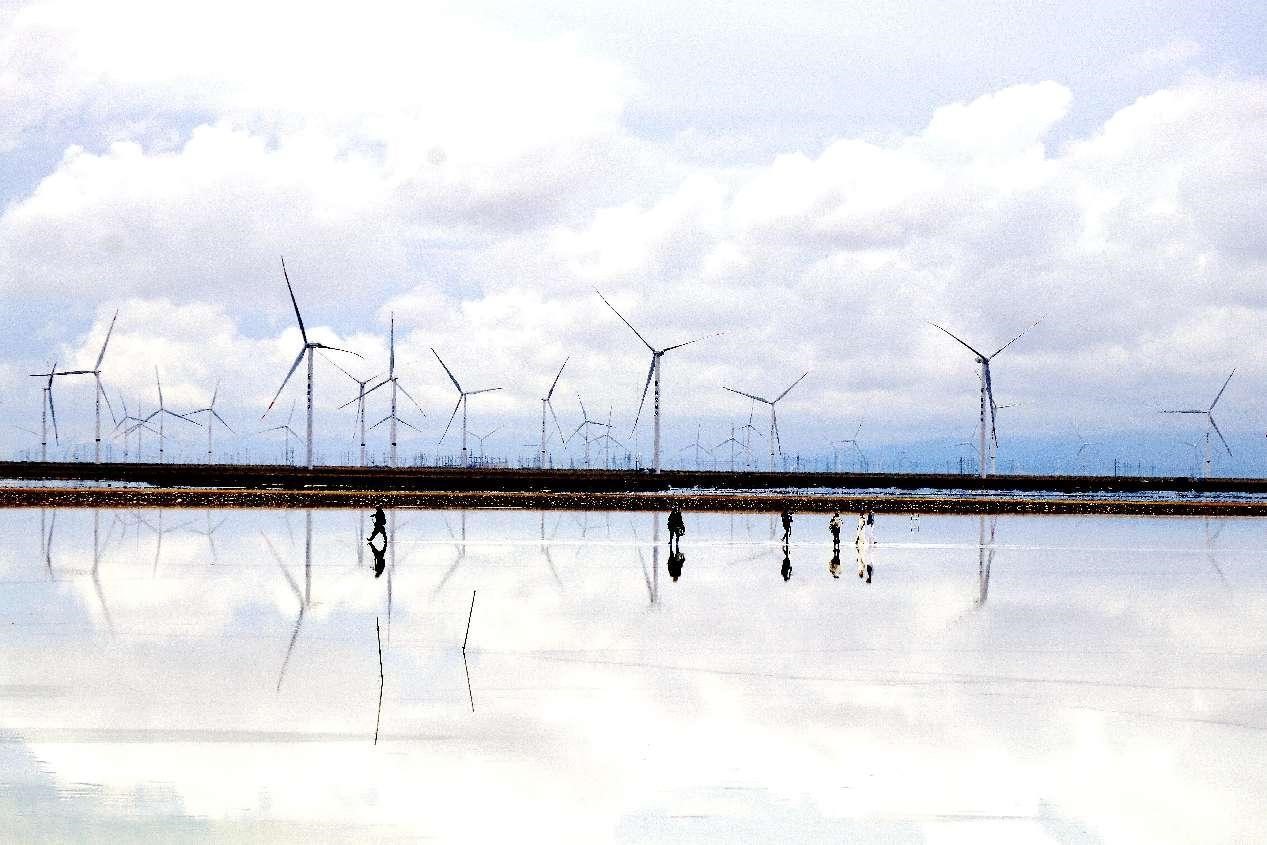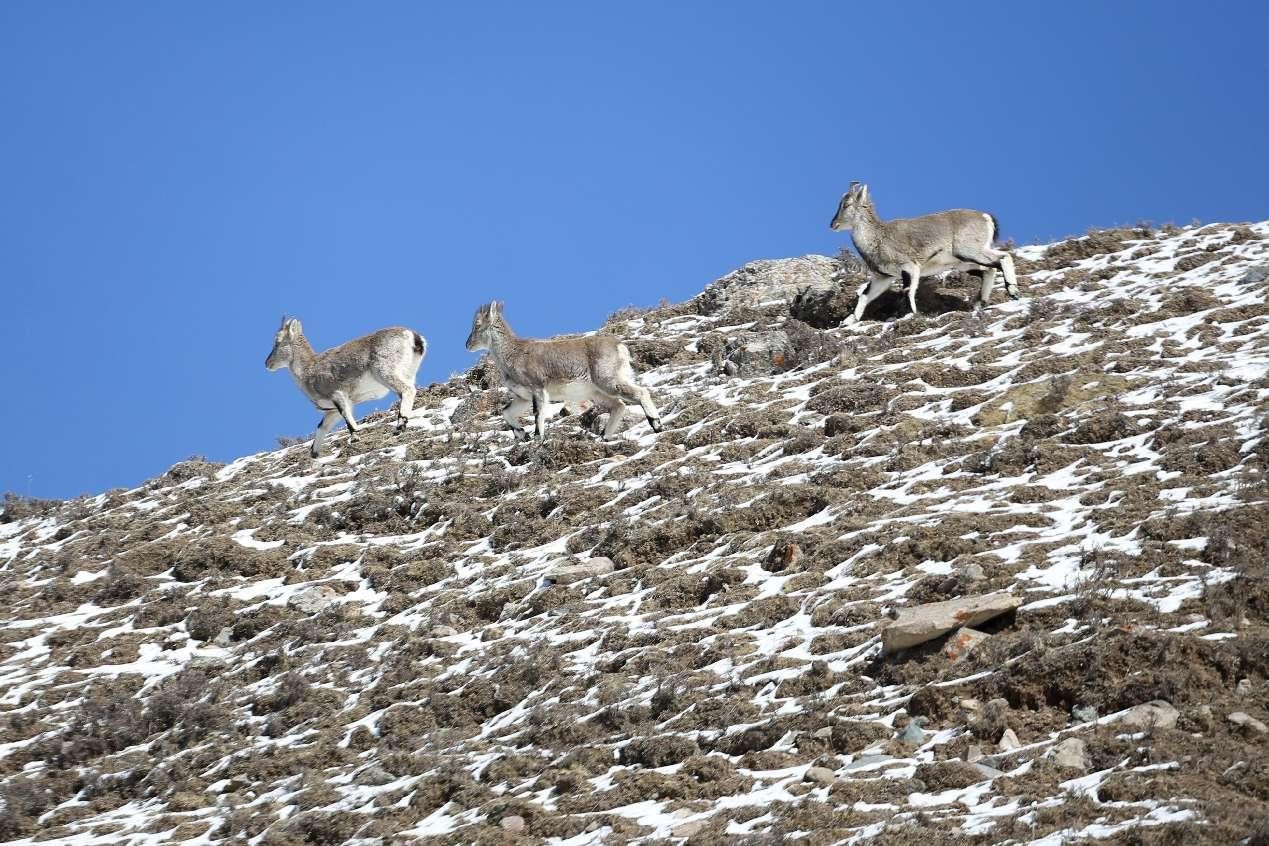Ecological conservation efforts yield fruitful outcomes in Qinghai, China
In the Longbao National Nature Reserve, located in Yushu Tibetan autonomous prefecture of northwest China's Qinghai province, Caicai and his fellow wetland rangers rose early to begin their daily patrol.
"This is China's first nature reserve dedicated to protecting black-necked cranes and their breeding base. In the recent couple of days, many birds have migrated here, preparing to mate. We must make sure this place is well protected," Caicai said. His gaze softened with a special gentleness as he observed a few black-necked cranes gliding over the distance meadows through a pair of binoculars.

Tourists visit the Chaka Salt Lake in Ulan county of Haixi Mongolian and Tibetan autonomous prefecture, northwest China's Qinghai province. (People's Daily Online/Wang Yi)
"In recent years, more and more wild animals have settled in our reserve as the ecology here continues to thrive. We are incredibly proud of this," Caicai told People's Daily.
In recent years, the Longbao National Nature Reserve has seen a steady increase in its wildlife population, thanks to the development of information-sharing platforms, partnerships with professional research monitoring teams, regular biodiversity monitoring surveys, educational activities on natural science, and creation of volunteer lake patrol teams, among others.
In particular, the number of birds spotted in the reserve has been on the rise year by year. Today, the reserve is home to 144 bird species from 39 families and 19 orders. More than 1.3 percent of black-necked cranes in the world live in the reserve, and the number of bar-headed geese there accounts for over 9.4 percent of the world's total.
This is only a miniature of how Qinghai province treasures and protects the eco-environment.
Located at the junction of the Loess Plateau and the Qinghai-Xizang Plateau, Qinghai province is hailed as China's "water tower," holding special significance in ecological conservation.
In recent years, Qinghai province has made notable strides in advancing ecological protection and high-quality development on the Qinghai-Xizang Plateau.
For instance, the water conservation capacity has continued to improve in the Sanjiangyuan region, which serves as the headwaters of China's three major rivers, namely the Yangtze, Yellow, and Lancang rivers.

Blue sheep forage on a peak of the Qilian Mountains, northwest China's Qinghai province, after a snow, on March 2, 2024. (People's Daily Online/Jiang Aiping)
The decrease in desertified and sandy areas in Qinghai has led to an expansion of grassland, with grass yields increasing year by year. The populations of wild animals and plants are also thriving.
The proportion of days with good air quality in the province exceeds 95 percent. All major rivers and lakes meet water quality standards for their designated uses. Remarkably, Qinghai ranks first in China in terms of total wetland area.
A robust nature reserve system centered on national parks is taking shape rapidly across Qinghai province, fortifying an ever-stronger ecological security shield.
The impressive environmental achievements would not have been possible without science-based restoration efforts.
In 2023, Qinghai conducted desertification control on 97,000 hectares of land, exceeding the annual target by 18 percent. Thanks to the collective efforts of province-wide voluntary tree planting initiatives, over 18 million new trees were planted, involving 3 million participants.
Moreover, Qinghai has further strengthened its support system for land greening by establishing an ecological and environmental monitoring network from sky to ground.
At the goji berry fields of Zongjia township, Dulan county, Haixi Mongolian and Tibetan autonomous prefecture, Qinghai province, major grower Ding Ling has been guiding local workers to take care of the goji seedlings during the past few days.
"The market has been very good in recent years. Thanks to Qinghai's exceptional ecological reputation, buyers speak highly of our goji berries. Our minimum income can reach 5,000 yuan ($690.95) per mu (about 667 square meters)," Ding told People's Daily.

Photo shows solar modules at a photovoltaic power industrial park in Golmud city, northwest China's Qinghai province. (People's Daily Online/Luo Xianyang)
In 2023, 27,600 hectares of goji berries were planted in Haixi Mongolian and Tibetan autonomous prefecture. A total of 91,300 tons of dried fruit were produced therefrom, accounting for nearly 20 percent of China's overall production. The production of dried fruit generated an output value of 3.32 billion yuan, representing 42.3 percent of the prefecture's total agricultural and pastoral output value. The total value of the entire industrial chain amounted to 12 billion yuan.
The booming goji berry industry in Qinghai is backed by flourishing eco-friendly approaches. Additionally, a number of key projects highlight the province's commitment to green development: the operation of the Maerdang Hydropower Station, the completion of the Yangqu dam, the construction of the world's largest liquid air energy storage demonstration project in Golmud city, and the operation of the Lijiaxia Hydropower Station, among others.
Qinghai is consistently striving for green and sustainable development. By the end of last year, the province secured a leading position in China for its clean and new energy capacity and non-hydro renewable energy consumption, with the total installed clean energy capacity reaching 51.07 million kilowatts. Lithium-ion battery production in the province accounts for 10 percent of the country's total. Besides, the monitored area of organic grasslands has surpassed 150 million mu (10 million hectares).
Today, Qinghai's development is featured by its lucid waters and lush mountains, with the thriving ecosystem emerging as the most inclusive public good for the residents.
In 2023, 76 percent of Qinghai's fiscal expenditure went to livelihood projects. The growth in per capita disposable personal income of all residents outpaced the overall economic growth of the province. Farmers and herdsmen saw income growth surpassing China's national average, and the urban-rural income gap continued to narrow.
Across Qinghai province, from valleys to grasslands, from snow-capped highlands to desert towns, ecological conservation and livelihood improvement are mutually reinforcing.
Photos
Related Stories
- Marine ecological pasture complex gains development momentum in E China
- Technology enhances ecological protection in China
- China establishes world's largest ecological monitoring network system: MEE
- Putian in SE China's Fujian promotes green development of marine fishery sector
- Chongren in E China's Jiangxi transforms natural endowments into economic benefits
Copyright © 2024 People's Daily Online. All Rights Reserved.









